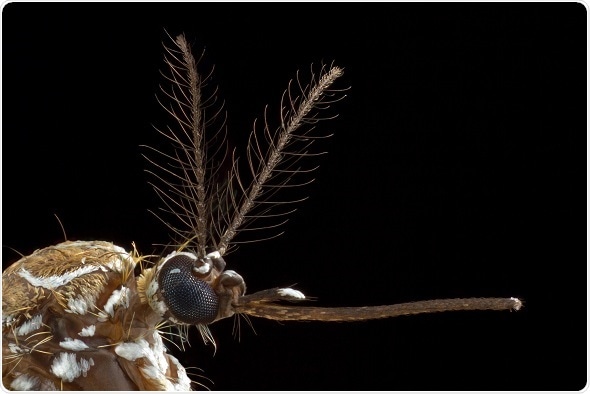Mar 29 2019
Female mosquitoes are known to rely on an array of sensory information to find people to bite, picking up on carbon dioxide, body odor, heat, moisture, and visual cues. Now researchers reporting in the journal Current Biology on March 28 have discovered how mosquitoes pick up on acidic volatiles found in human sweat.

The key is an olfactory coreceptor known as Ir8a. Mosquitoes lacking a functional version of the Ir8a gene were much less attracted to people, the researchers found. The findings potentially suggest new approaches for designing new and improved mosquito repellents.
Removing the function of Ir8a removes approximately 50 percent of host-seeking activity. Odors that mask the IR8a pathway could be found that could enhance the efficacy of current repellents like DEET or picaridin. In this way, our discovery may help make people disappear as potential hosts for mosquitoes."
Senior author Matthew DeGennaro (@MattDeGennaro), a mosquito neurobiology researcher at Florida International University in Miami
On the flip side, the Ir8a pathway also could be used to design new mosquito attractants, he adds. Those attractants could lure mosquitoes away from people and into traps.
The inspiration for the new work came from previous work DeGennaro conducted as a postdoctoral student in Leslie Vosshall's lab at The Rockefeller University. In those studies, the team disrupted another olfactory coreceptor, called Orco, and watched to see how it changed mosquitoes' behavior.
They found that those mosquitoes had more trouble telling the difference between people and other animals. The mosquitos also lost their interest in nectar and their aversion to DEET. But, they still were attracted to vertebrate animals including people. It meant that there were more receptors still to find.
In the new study, DeGennaro and his colleagues looked to another group of receptors broadly known as ionotropic receptors and specifically Ir8a, which is expressed in the antenna. They used the CRISPR/Cas9 gene-editing system to disrupt Ir8a in Aedes aegypti mosquitoes. Then, they tested the coreceptor's relative contribution in human odor detection and its genetic interaction with other olfactory receptor pathways that had been implicated previously in Ae. aegypti host-seeking behavior.
The studies show that mosquitoes carrying a mutant version of Ir8a weren't attracted to lactic acid and couldn't detect other acidic components of human odor. In comparison to wild-type controls in membrane blood-feeding assays, Ir8a mutants showed reduced responses to human odor, but not heat or CO2. Ir8a mutants also were less responsive to humans and human odor than were wild-type controls in another set of experiments.
Their findings further suggest that genetic interactions among various receptors are important, with CO2 sensitizing mosquitoes to human odors. They also highlight the importance of detecting human acidic volatiles in the insects' ability to hunt and feed on humans.
The Ir8a phenotype was not modulated by carbon dioxide, but required the function of the carbon dioxide receptor. This suggests that carbon dioxide is necessary to activate the IR8a response to acidic volatiles in human odor, but not sufficient to rescue the mutant phenotype. Our results strongly suggest that host odor detection by IR8a is an indispensable component of the mosquito's host detection system."
Matthew DeGennaro
DeGennaro says their ultimate goal is to develop a life-saving perfume to protect people from mosquito bites, and this new study is an important step along the way.
"The transmission of diseases like dengue, yellow fever, Zika, and malaria can be blocked if we stop these mosquitoes from biting us," DeGennaro says. "In order to find new solutions to prevent mosquito bites, we need to focus on understanding the molecular basis of mosquito behavior."
The researchers now hope to gain an even more detailed view of the IR8a pathway. Next, they'll begin chemical screens, using the identified genes to lead them to potentially new mosquito attractants and repellents.